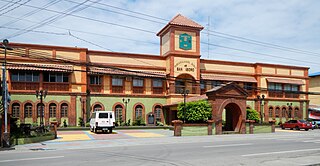
San Isidro, officially the Municipality of San Isidro, is a 2nd class municipality in the province of Nueva Ecija, Philippines. According to the 2020 census, it has a population of 54,372 people.

San Antonio, officially the Municipality of San Antonio, is a 1st class municipality in the province of Nueva Ecija, Philippines. According to the 2020 census, it has a population of 83,060 people.
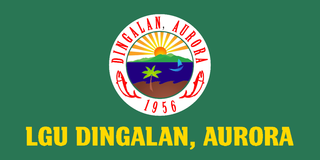
Dingalan, officially the Municipality of Dingalan, is a 3rd-class municipality in the province of Aurora, Philippines. According to the 2020 census, it has a population of 27,878 people.
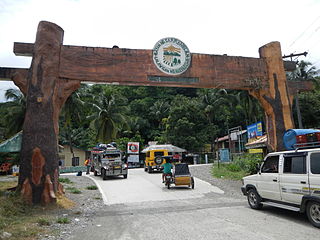
Carranglan, officially the Municipality of Carranglan, is a 1st class municipality in the province of Nueva Ecija, Philippines. According to the 2020 census, it has a population of 42,420 people.

Talavera, officially the Municipality of Talavera, is a 1st class municipality in the province of Nueva Ecija, Philippines. According to the PSA Census of Housing and Population for 2020, it has a population of 132,338.

Peñaranda, officially the Municipality of Peñaranda, is a 4th class municipality in the province of Nueva Ecija, Philippines. According to the 2020 census, it has a population of 32,269 people.

Palayan, officially the City of Palayan, is a 5th class component city and capital of the province of Nueva Ecija, Philippines. According to the 2020 census, it has a population of 45,383 people, making it the least populated city in the Philippines.
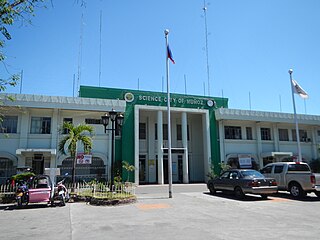
Muñoz, officially the Science City of Muñoz, is a 4th class component city in the province of Nueva Ecija, Philippines. According to the 2020 census, it has a population of 84,308 people.

Aliaga, officially the Municipality of Aliaga, is a 2nd class municipality in the province of Nueva Ecija, Philippines. According to the 2020 census, it has a population of 70,363 people.

Bongabon, officially the Municipality of Bongabon, is a 2nd class municipality in the province of Nueva Ecija, Philippines. According to the 2020 census, it has a population of 66,839 people.
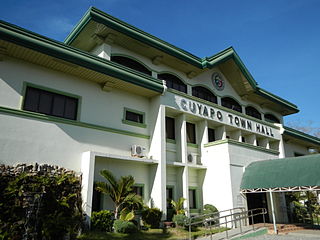
Cuyapo, officially the Municipality of Cuyapo, is a 1st class municipality in the province of Nueva Ecija, Philippines. According to the 2020 census, it has a population of 68,066 people.

General Mamerto Natividad, officially the Municipality of General Mamerto Natividad, also known as Gen. M. Natividad, is a 4th class municipality in the province of Nueva Ecija, Philippines. According to the 2020 census, it has a population of 44,311 people.

Guimba, officially the Municipality of Guimba, is a 1st class municipality in the province of Nueva Ecija, Philippines. According to the 2020 census, it has a population of 127,653 people.
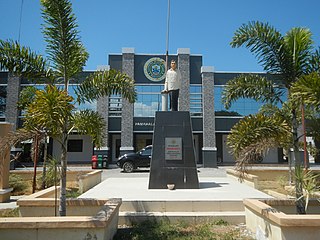
Llanera, officially the Municipality of Llanera, is a 4th class municipality in the province of Nueva Ecija, Philippines. According to the 2020 census, it has a population of 42,281 people.

Lupao, officially the Municipality of Lupao, is a 3rd class municipality in the province of Nueva Ecija, Philippines. According to the 2020 census, it has a population of 45,917 people.
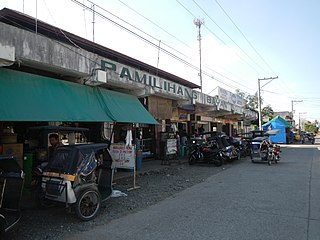
Laur, officially the Municipality of Laur, is a 3rd class municipality in the province of Nueva Ecija in Central Luzon region of Philippines. According to the 2020 census, it has a population of 38,263 people. Laur is located at the foothills of the Sierra Madre Mountains.

Nampicuan, officially the Municipality of Nampicuan, is a 5th class municipality in the province of Nueva Ecija, Philippines. According to the 2020 census, it has a population of 14,471 people.

Quezon, officially the Municipality of Quezon, is a 4th class municipality in the province of Nueva Ecija, Philippines that was named from the 2nd president of the Philippines, Manuel L. Quezon. According to the 2020 census, it has a population of 41,845 people.

Rizal, officially the Municipality of Rizal is a 2nd class municipality in the province of Nueva Ecija, Philippines. According to the 2020 census, it has a population of 70,196 people.

Talugtug, officially the Municipality of Talugtug, is a 4th class municipality in the province of Nueva Ecija, Philippines. According to the 2020 census, it has a population of 25,236 people.
























